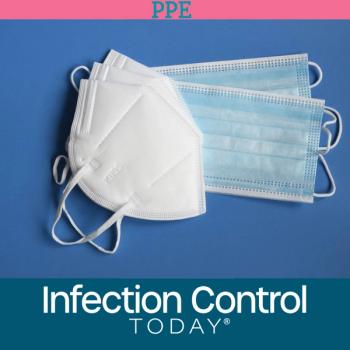
- Infection Control Today, December 2021 (Vol. 25 No. 10)
- Volume 25
- Issue 10
C Diff Infection? Take Note of the Risk Factors
The use of almost every antibiotic increases the chances of Clostridioides difficile infection, and that includes the drugs that are used to treat C diff, a study states.
When it comes to what circumstances help breed Clostridioides difficile infection (CDI), there are some that could be called the usual suspects. They include increased age, hospitalization, use of proton pump inhibitors, and use of antibiotics, according to a recent study out of Pakistan. That study, published in Cureus,1 looked at data from 200 patients diagnosed with
C difficile–associated diarrhea (CDAD) at a tertiary care hospital in Pakistan between June 2020 and March 2021, along with 200 patients without CDAD in a control group.
“Identifying and addressing the risk factors associated with CDI will help [reduce] the incidence of infection and associated complications,” the authors, led by Aarzoo Gupta of Vardhman Mahavir Medical College and Safdarjung Hospital in Faridabad, India, wrote.
The study included detailed histories of patients’ use of treatments (antibiotics, proton pump inhibitors, and histamine 2 receptor antagonists), previous CDI diagnoses, and hospitalization in the past 30 days. Investigators also noted patients’ body mass index (BMI) and comorbidities including diabetes, chronic kidney disease (CKD), hypertension, and malignancy.
In the case group, 31 patients were older than 65 (15.5%), compared with 16 (8%) in the control group (OR [odds ratio], 2.10 [1.11-3.99]; P = .02). “This age group is not only termed as a risk factor for CDI but such patients also demonstrate poor prognosis, leading to increased clinical severity and death rates,” the authors wrote.
Patients with CDI also had significantly higher hospitalization (25.5% vs 6%; OR, 5.36 [2.75-10.42]; P < .0001), use of proton pump inhibitors in past 30 days (23.0% vs 10.5%; OR, 2.54 [1.45-4.45]; P = .001), and use of antibiotics in the past 30 days (36.0% vs 10.5%; OR, 4.76 [2.80-8.19]; P < .0001).
“Studies have suggested that almost every antibiotic results in an increased chance of developing CDI,” the authors wrote. “This also includes the drugs that are used to treat CDI, namely metronidazole and vancomycin.”
Other risk factors included a BMI above 25 kg/m2 (31% vs 21%; OR, 1.69 [1.07-2.65]; P = .02), diabetes (27% vs 16%; OR, 1.94 [1.18-2.17]; P = .008), CKD (19% vs 9.5%; OR, 2.23 [1.23-4.03]; P = .007), and malignancy (6% vs 2%; OR, 3.12 [0.99-9.86]; P = .05).
“Given the findings [above], our study suggests that the use of acid-suppressive agents should be carefully considered, and the over-the-counter availability of these agents should be discouraged,” the authors wrote. “This would help the doctors to keep a check in order to avoid overdose. Moreover, hygiene practices, such as hand washing practices, sterilizing used [equipment] at the hospital, using clean medical devices, etc, should be adopted to avoid infection risk. Maximum management of antibiotic intake should also be taken into consideration.”
CDI is the leading cause of health care–associated infections, causing about a half million infections and $1 billion in health care costs each year. Although CDI is often associated with health care settings, a recent study by investigators at the University of Houston found that the bacterium is prevalent in a variety of settings, including on 45% of shoe soles.2 Healthy people can carry CDI without illness or symptoms.
This article originally appeared in
References:
- Gupta A, Savanti F, Singh B, et al. Risk factors associated with Clostridium difficile-associated diarrhea. Cureus. 2021;13(9):e18115. doi:10.7759/cureus.18115
- Alonso CD, Kelly CP, Garey KW, et al. Ultrasensitive and quantitative toxin measurement correlates with baseline severity, severe outcomes, and recurrence among hospitalized patients with Clostridioides difficile infection. Clin Infect Dis. 2021;ciab826. doi:10.1093/cid/ciab826
- Lorenz, J. Risk factors associated with C diff infection. Contagion®. October 31, 2021. Accessed November 1, 2021. https://www.contagionlive.com/view/risk-factors-associated-with-c-diff-infection
Articles in this issue
about 4 years ago
How to Keep Sharps Safety a Cut Aboveabout 4 years ago
How IPs Can Better Monitor Sterilization, Disinfectionabout 4 years ago
Prepare for the Post-Pandemic Normal, IPsabout 4 years ago
Battling HAIs: A Primer for Infection Preventionistsabout 4 years ago
Necessity Made COVID-19 the Mother of Inventionsabout 4 years ago
IP Strategies for Mitigating Spread of Candida aurisabout 4 years ago
Good Adherence Involves More Than Just a Checklistabout 4 years ago
Air Sampling Detects COVID-19 Spread in Dormitoriesabout 4 years ago
COVID-19 Boosters Need to be Encouragedabout 4 years ago
Children Could Incubate the Next COVID-19 VariantNewsletter
Stay prepared and protected with Infection Control Today's newsletter, delivering essential updates, best practices, and expert insights for infection preventionists.






